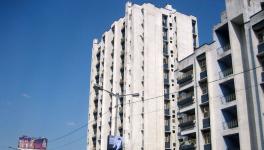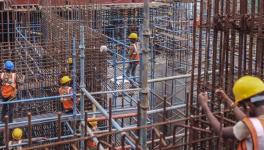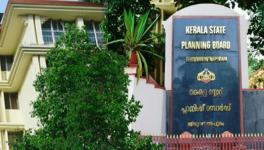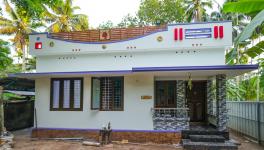Lessons from 2018 Floods: Flood-resistant Houses in Kerala Show Way Forward
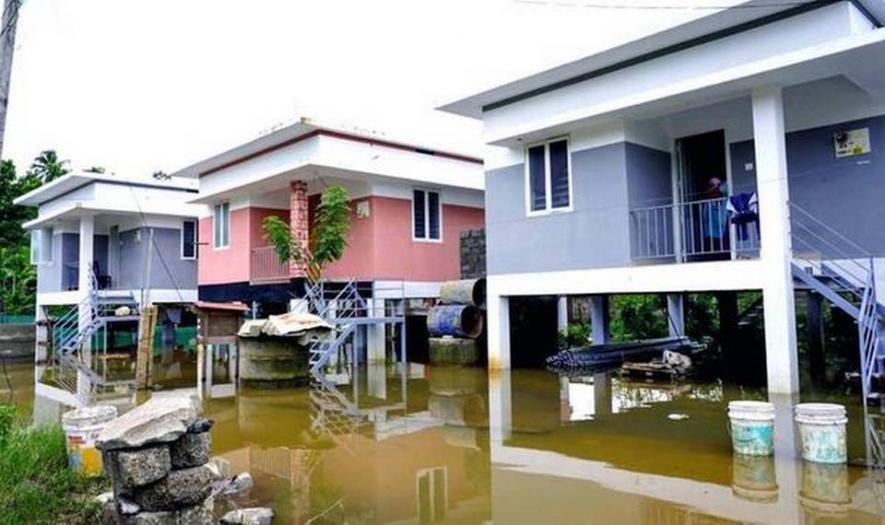
Floods, landslides, and landslips following torrential rains have affected Kerala for the third consecutive year. Though the number of people affected due to flood is less compared to 2018 and 2019, landslides and landslips were very rampant in high-range areas of the state. On August 6, a landslide at Pettimudi settlement in Rajamala near Munnar in Idukki district claimed the lives of 52 people while the search is underway to locate 19 more persons who went missing following the devastating landslide.
In the backdrop of these catastrophes, an alternative housing model from Kuttanad warrants attention. The low-lying Kuttanad area, a below-sea-level area spread across Alappuzha, Pathanamthitta and Kottayam districts, is swallowed by rainwater every year disrupting the life and destroying paddy, vegetables, and fish cultivation. Every monsoon, people have to move to the relief camps in an almost routine exercise.
However, after the 2018 floods, flood-resistant buildings have become familiar in the state. The state government has also started building flood-resistant houses in flood-prone areas under the Life Mission. As many as 2,51,227 houses were damaged in the aftermath of the floods of 2018. Of them, 14,886 had collapsed irretrievably. In 2019 also, many houses were damaged. Though most of the houses that had collapsed have now been rebuilt or repaired, the question of whether those can withstand recurrent floods remains.
Houses that are built on pilings or pillars are very common on the banks of water bodies and low-lying areas in developed countries. The Netherlands, the pioneers in building flood-proof houses, has houses on raised platforms--floating homes, which rise and fall with the water levels, and amphibious homes that sit on dry land but float when water encroaches. This Dutch model of flood control has inspired the state and its rebuilding project.
At Thiruvalla, which falls under the Upper Kuttanad area, 40 families who live behind the Pampa River Factory are happy with similar houses and have no fear of flooding. The families had lost their homes in the floods of 2018.
Each house had a total cost of Rs 7 lakh and of these, Rs 4 lakh had been allotted by the state government. Federation of Malayali Associations of Americas (FOMAA) and ‘Thanal’, a voluntary organisation, have been part of the State government’s Rebuild Kerala programme. Thanal had made the plan of these houses.
Each house — with two bedrooms, a kitchen, a hall, sit-out, and toilet — has been constructed on the land allotted by the Travancore Sugars and Chemicals Limited in Pulikeezhu. The new houses were constructed on eight-metre tall pillars so that ordinary floods would not pose a threat.
Many such houses have been built in flood-prone areas of the state. So far, 2,19,154 houses have been built under the Life Mission of the state government.
Apart from this, the state has introduced ‘Room for the River’, a flood-mitigation concept that had successfully been demonstrated by the Netherlands. Under this concept, flooding water is given more room to flow and thus, the flooding can be controlled.
“It can resist a deluge of last year’s force and an earthquake of the magnitude of 7 on Richter scale,” said George Mathew, a construction expert who revealed a house in Kuttanad through the support of the Kerala Mariners Forum.
Such houses are being built in urban areas too. Many are adopting eco-friendly construction methods and most popular houses in this segment are the ‘habitat houses’ constructed by noted architect G. Shankar. “Its architecture, pillaring, plastering, etc. have been meticulously done to withstand natural disasters. Pillars have been constructed with treated bamboo, mud and concrete. Plastering has been done by using mud tiles, coconut shells, and treated bamboo. This small but pretty house has two bedrooms, a living area, kitchen, and a bathroom,” said Shankar.
“This house can sustain itself as any other concrete structure. In case of calamities like floods, the inhabitants can rush to the third storey and stay there until the time they are evacuated,” Shankar had explained to Mongabay-India.
Get the latest reports & analysis with people's perspective on Protests, movements & deep analytical videos, discussions of the current affairs in your Telegram app. Subscribe to NewsClick's Telegram channel & get Real-Time updates on stories, as they get published on our website.











